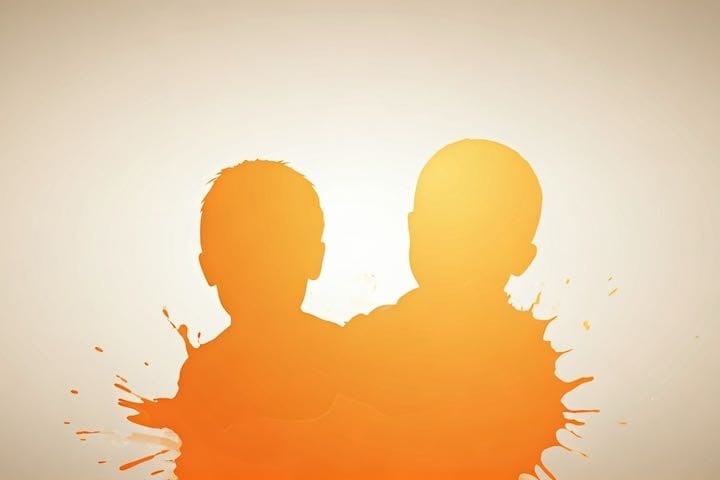WHAT IS SAFEGUARDING?
This article answers the question ‘What is Safeguarding?’If you have children or young people temporarily under your care, this article is for you, and it is important you understand what safeguarding is.Put succinctly, Safeguarding is what we do to prevent harm from happening, while Child Protection focuses on how we respond to harm, or the potential of harm.In essence, Safeguarding means taking steps to ensure that:
• children are protected from abuse and maltreatment
• harm to children’s health or development is prevented
• children grow up with safe and effective careEveryone who works with or comes into contact with vulnerable people, both children and adults, has a safeguarding responsibility.In other words, they have a duty to identify concerns, share information and take prompt action, so that the right help is received at the right time.If you wish you provide your staff with an understanding of their safeguarding and child protection responsibilities in a clear and simple way you could email them this
online Safeguarding CPD accredited course.Or for those in Scotland this
online Child Protection course is appropriate
What does Child Protection mean?
Part of safeguarding, child protection refers to the action taken to protect children who are being abused or who are at risk of abuse.In Scotland child protection is taken as the overarching term that incorporates both safeguarding from harm and protecting when harm has happened
What is abuse?
Child abuse is when someone causes (or doesn’t prevent) significant harm to a child. There are four main categories of abuse: physical abuse, sexual abuse, emotional abuse and neglect.Abuse can happen once or occur over a period of time. Girls and boys are equally as likely to experience abuse. The majority of children are abused by someone they know and trust, such as a parent or carer, a family friend, teacher, sibling, friend or neighbour. More rarely, the abuser may be a stranger.A child might be abused by one or more person. Abusers can be male or female, adult or child. Child abuse can happen anywhere, for example directly in the home or at a sports club, or indirectly via the internet.
Why is safeguarding training required?
Everyone in society has a role in protecting children but no individual can see the whole picture of a child’s experience. As someone who works or volunteers with children, your role may be greater than most. Knowing how to fulfil safeguarding duties appropriately can seem daunting.
Online Safeguarding training courses will give you the knowledge needed to both recognise a concern and be able to respond to it properly.Typically courses will cover what are known as the 4Rs of safeguarding.These are:1.
Recognise – You cannot act if you do not know the signs and indicators of abuse2.
Respond – Knowing how to respond quickly and appropriately is essential3.
Report – You need to understand what to report and who to report it to4.
Record – You also need to know, when how and what to record
What is safeguarding legislation in the UK?
Each UK nation has a framework of legislation, guidance and practice to safeguard children. In England, Wales and Northern Ireland, legislation outlines legal duties to report concerns about a child’s welfare.In Scotland, while there is no legal requirement to report concerns, guidance refers to “collective responsibilities” to protect children. Although child protection systems are different in each nation, they are all based on similar fundamental principles.In other words, we all have a responsibility to support, promote and safeguard the wellbeing of all children. Core country-specific guidance is listed below.
England•
The Children Act 1989
•
Working Together to Safeguard Children 2018
•
Keeping Children Safe in Education 2020
•
Keeping Children Safe in Out-of-School Settings 2020Scotland•
The Children (Scotland) Act 1995
•
Protection of Children (Scotland) Act 2003
•
National Guidance for Child Protection 2014
•
Getting It Right For Every Child (GIRFEC) 2015Northern Ireland•
Children (Northern Ireland) Order 1995
•
Co-operating to Safeguard Children and Young People in Northern Ireland 2017
•
SBNI Core Policy and Procedures 2018Wales•
The Children Act 1989
•
Social Services and Well-being (Wales) Act 2014
•
Wales Safeguarding Procedures and Practice Guides 2019Why is safeguarding training required?
Everyone in society has a role in protecting children but no individual can see the whole picture of a child’s experience. As someone who works or volunteers with children, your role may be greater than most. Knowing how to fulfil safeguarding duties appropriately can seem daunting.
Online Safeguarding training courses will give you the knowledge needed to both recognise a concern and be able to respond to it properly.You will also receive a completion certificate. This enables employers to demonstrate that they have taken appropriate measures to reduce the chance of harm.Typically safeguarding and child protection courses will cover what are known as the 4Rs of safeguarding.These are:1.
Recognise – You cannot act if you do not know the signs and indicators of abuse2.
Respond – Knowing how to respond quickly and appropriately is essential3.
Report – You need to understand what to report and who to report it to4.
Record – You also need to know, when how and what to record
What are individuals safeguarding responsibilities?
While parents and carers usually have primary care for their children, we all have moral and legal responsibilities for the welfare of all children. Everyone who works or volunteers with children has a responsibility for keeping them safe, and everyone who comes into contact with children and families has a role to play in identifying concerns, sharing information, and taking prompt action. It is not the responsibility of the person who reports a child protection concern to determine whether or not the abuse occurred.This is up to the professional agency responsible for following up on the report. Your responsibility is simply to raise your concerns with the person in your organisation responsible for child safeguarding and protection.If you do not work for an organisation, you can seek advice from the
NSPCC. If you are a bystander witnessing something abusive happening to a child and have no one to report to, then you should report it to the police. Indeed, if ever you fear a child is in immediate danger, call 999 and ask for the police.
What are Organisations safeguarding responsibilities?
Organisations that work with children and families must have safeguarding and child protection policies and procedures in place to provide guidance on responding and reporting concerns about a child. These organisational policies are important to avoid delays in sharing information concerning the safety and welfare of children.Tragically, history notes that missed opportunities to record, understand the significance of, and share information in a timely manner can have severe consequences for the safety of children. It is the organisation’s responsibility that staff and volunteers undertake any relevant training.While this training may vary depending on their role and their needs and requirements, some general principles apply when responding to child welfare concerns. If you wish your staff to understand full their duties with respect to safeguarding and child protection you may wish to provide them with our online safeguarding and child protection course
here.


